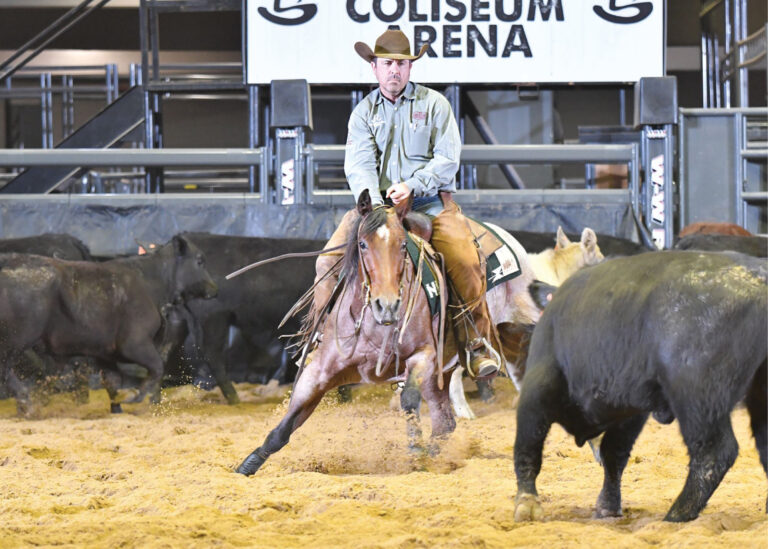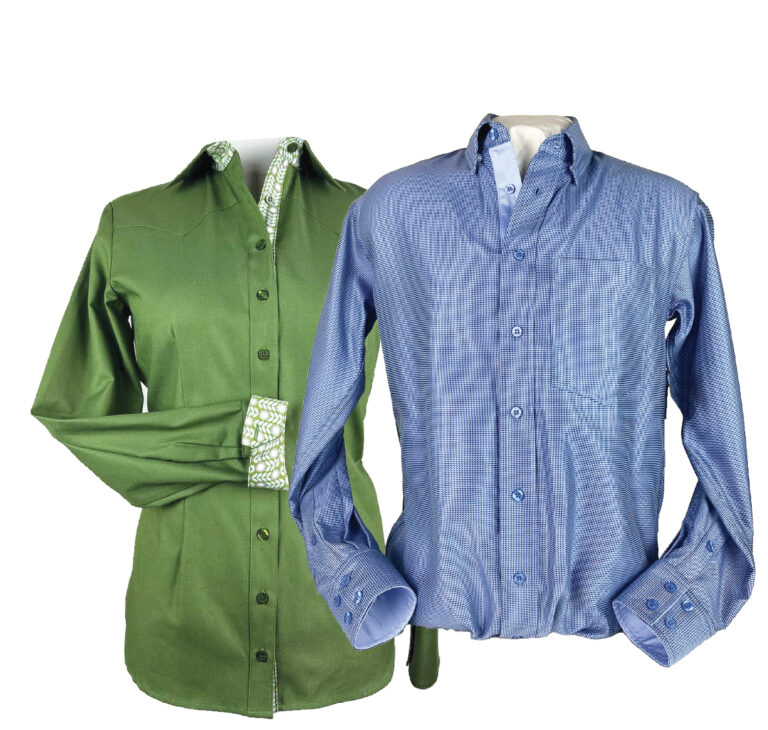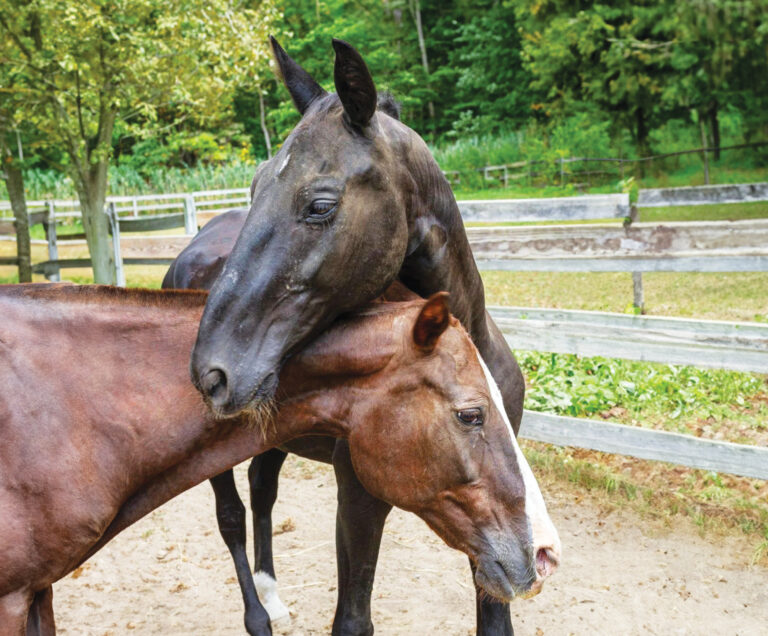As a parent, or perhaps grandparent, of a horse-crazed youngster, you’ve survived the toddler years with the help of model horses, stuffed-animal ponies, and a worn-out, plastic Trigger-on-springs. Now your walking, talking tot really wants to ride, and you really want to provide that opportunity. You’re savvy enough to know a solid education is the foundation to enjoying any activity—think piano lessons or ice skating—and horseback riding is no different.
But actually teaching a child in the art of effective horsemanship, as opposed to simply giving lead-line rides…well, are you capable? You can be, with my four-step, “ABC” program of tyke training. It’s the same program I use when teaching small children in my professional lessons.
This month, I’ll get you started by telling you how to assess the ABCs: attention, balance, and confidence. These are the three basic qualities needed by young riders. I’ll guide you through the first two progressive, safety-oriented steps I take before putting the child’s horse (or pony) in motion. Next month, I’ll cover the program’s actual-ride steps—first on a longe line, then going solo.
STEP 1: MOUNT/DISMOUNT
Before getting your student into the saddle, it’s a good idea to demonstrate which foot starts the process (the left), and where the hands go on the saddle (left hand on the horn, right hand on the cantle). If your child’s too small to reach the stirrup even from a mounting block, simply grasp under her arms and lift her into a mounting position beside the horse.
While you’re holding the child beside the horse, or coaching beside the mounting block, tell her to put the correct foot (left) in the stirrup and to grab the horn with her left hand and the cantle with her right, as you showed her. Balance the child as she puts her weight into the stirrup, and have her swing her right leg over the horse as you help position her up and into the saddle.
When first attempting to dismount, most children will lean forward, turn their chest to you, and extend their arms, wanting you to lift them down. Instead, teach proper dismounting habits, which I recommend before progressing any further.
Here’s how: As you place your hand on your child’s back, say, “Turn your back toward me.” When she does, have her hold the horn in her left hand and the cantle in her right, and swing her right leg down toward you. Grasp under her arms again, and lightly lift her upward as you instruct her to take her foot out of the stirrup. Then gently set her down.
For a youngster using a mounting block, help balance her dismount by supporting her back and hips as she lowers her right leg to the block and frees her stirrup foot.
STEP 2: STAND-STILL ABCs
Next, with the horse standing still, you’ll delve back into the ABCs to determine whether your tyke is ready for a riding lesson in motion. By now, you’ll have a reasonable measure of the child’s attention span, as evaluated by her behavior on the ground and during Step 1.
Assuming she’s still attentive (if not, see “Tips For Tots,” on page 59), move on to assessing balance with these three exercises: lean forward, lean back, and touch toes.
For lean forward, say, “Lean way forward and stretch your hands out to try to touch the horse’s ears, but keep your bottom on the saddle.” You want to see the tyke bend forward from her waist, reach her hands toward the horse’s ears, keep her bottom nestled in the saddle, and keep her legs positioned in a proper heel-under-hip and toe-under-knee alignment.
As the instructor, you’ll get triple info from this exercise. You’ll learn whether the child can follow instructions while sitting on top of the horse, indicating a quality attention span. You’ll see whether she can bend from her waist and reach forward with her hands without her bottom lifting up off the saddle, indicating a potential good seat. And, you’ll find out whether she can control her legs as she tries this exercise, indicating natural balance.
If the child doesn’t execute this exercise correctly, you’ll have discovered a balance-development opportunity. For example, if the child’s lower leg, from knee to toe, swings back toward the horse’s flank when she bends forward, you’ll know she’s squeezed her thighs together and rocked forward off her seat bones into an unbalanced, unsafe position. Help her by standing behind her, and holding her lower leg and hip/bottom in the proper positions, as she stretches. Continue to help her until she can hold the correct position on her own.
For lean back, say, “Reach back behind you with both hands as far as you can, and try to touch the horse’s tail.” You want to see a confident rearward stretch through her entire upper body while her legs, from thigh to toe, stay in proper alignment. You’ll gain two insights into your student with this exercise.
First, you’ll get a clear picture of her confidence level. If she leans back with enthusiasm and really stretches for that tail, she’s already feeling confident and comfortable in her ability to sit on her horse. But if she reaches back with her arms only, in a hesitant manner, and leaves her upper body shifted forward, she’s still a little nervous about her ability to balance on the horse. You’ll want to build her confidence by spending more time on these balancing exercises.
Second, you’ll learn more about her innate balance. Ideally, her leg—from thigh to toe—will stay in line with her hip, and the closer she can come to this ideal, the better her natural riding balance. But if her leg swings forward as she leans back, she lacks lower leg strength and control. Help build up her control by holding her leg in the proper position as she learns to stretch and reach toward the tail. You’ll also want to spend more time working this rider on position-improvement exercises, such as these two-point position at a standstill (to be covered next month).
For touch toes, say, “Lean over and try to touch your toes.” The goal of this exercise is not for the child to actually touch her toes, but for you to analyze what happens to her body position when she tries. Ideally, she’ll keep both buttock cheeks on the saddle, and “collapse” through her tummy as she leans her shoulders toward the horn. Her belly button should stay centered behind the horn and her legs should stay in proper alignment. If your student can do this, she’s demonstrating an outstanding balance center, and will be a safe, effective little rider.
But if she leans to the side with her shoulders and lifts her bottom out of the saddle, her balance center is naturally in her upper body. She’ll need work to develop a secure center of balance at her core. Coach her to relax through her back and push down into her seat as she tries to keep her belly button behind the horn during this exercise.
Once you’re at this point—and it may take you more than one lesson to get there—you’ll have gained a better idea of your pupil’s confidence, via length of her attention span and her willingness to perform the balance-test maneuvers.
If she’s still with you, attention-wise, and reasonably able to do the stand-still balance tests, you’ll know she’s ready to progress to the in-motion steps I’ll give you next month. But if she’s hesitant to let go of the horn to try the exercises, you need to help build her confidence first.
Try these measures: Practice mounting and dismounting; let your tyke sit quietly on the horse for 15 minutes or so (long enough to get used to being that high off the ground); and—when she’s ready—give her a fun “pony ride” by leading her on the horse.







